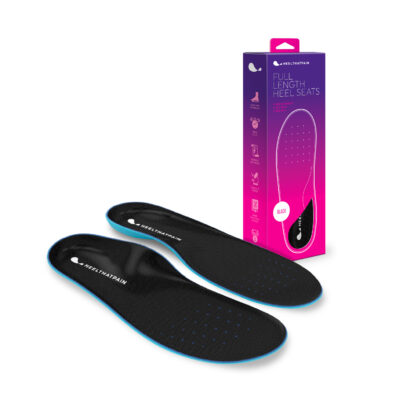ESWT - Extracorporeal Shock Wave Therapy
For 90% of people who suffer from plantar fasciitis, treatments are pretty straightforward and include tried-and-true methods like orthotics, rest, icing, and stretching.
However, for the 10% of people who just don’t respond to these conservative treatments, next steps can be confusing (not to mention expensive). Which treatment is the best? The most effective?
Increasingly doctors are recommending ESWT (Extracorporeal Shockwave Therapy) as a standard next step after conservative treatments fail to improve plantar fasciitis. In this article, we’ll explore what ESWT is, how it works, what the evidence shows, what to expect, and potential drawbacks and alternatives.
What Is Extracorporeal Shock Wave Therapy?
Extracorporeal Shock Wave Therapy also known as ESWT is a noninvasive treatment for pain relief from heel pain associated with plantar fasciitis. For some patients, ESWT may actually be as effective as surgery.
Originally developed to dissolve kidney stones, the procedure involves shockwaves, or sound waves, that are directed from outside the body onto the heel of the foot. These shockwaves are intended to stimulate the body’s own healing process, break up scar tissue and adhesions, and help reduce sensitivity and pain in the foot.
How Does Shock Wave Therapy Treat Plantar Fasciitis?
ESWT works by sending highly targeted shockwaves into the damaged plantar tissue using a specialized handheld device. The shockwaves used in ESWT may be either high or low intensity, depending on your provider and your treatment goals.
The targeted shockwaves from ESWT can help break up old scar tissue that makes it difficult for the plantar fascia to absorb impact and function properly. And in the months following ESWT, the body’s healing response kicks into gear, which results in new, healthy tissue and blood vessels to replace the injured and damaged tissue.
What to Expect During ESWT for Plantar Fasciitis
ESWT treatments are usually performed in a doctor’s office and are considered an outpatient procedure with a quick recovery.
During a typical Extracorporeal Shock Wave Therapy (ESWT) session, you will arrive at the treatment center and meet your doctor along with an ESWT technician. You will then recline, either in a chair or on a bed, as the technician begins to administer the shockwaves into the portion of your inflamed fascia. During this 20 minute procedure, thousands of shock waves will be sent into the heel of your foot. After the procedure is over, you will be free to go home.
Unlike surgery, you won’t need to plan for a long downtime or recovery. With low-intensity ESWT, you won’t need anesthesia (the procedure isn’t painful but may be somewhat uncomfortable). However, with higher-intensity ESWT shockwaves, your doctor will supply local anesthesia since otherwise the procedure can be very intense and painful.
How Effective Is ESWT?
A recent meta-analysis by Haibo Li, et. al., that was published in the Journal of Cellular Physiology, set out to evaluate eight popular medical treatments for chronic plantar fasciitis: NSAIDs (non-steroidal anti-inflammatory medications), corticosteroid injections, platelet-rich plasma treatments (PRP), extracorporeal shockwave therapy (ESWT), ultrasound therapy, dry needling, and botulinum toxin treatments).
When each of these eight treatments were evaluated for factors like improved foot function and pain relief, “ESWT had the best overall efficacy among eight interventions given the fact that it ranked first in all four outcomes.”
Risks, Drawbacks, and Side Effects of ESWT
One of the biggest drawbacks of ESWT is that many insurance providers don’t cover the procedure, making it relatively expensive. Depending on your provider, each treatment can cost anywhere between $200-$1000.
And while ESWT is generally considered low risk and non-invasive, it’s not for everybody. Because of possible complications with the energy from the shockwaves, people who have pacemakers, people who are pregnant, and people who are taking certain kinds of medications shouldn’t use ESWT for treatment.
Learn About Other Evidence-Based Medical Treatments for Plantar Fasciitis
By far, the most common negative side effects of ESWT are temporary and include minor bruising at the treatment site, redness, and swelling.
While ESWT isn’t a one-size-fits-all cure for chronic plantar fasciitis, it is a promising next step for those who have tried standard at-home care without success.






